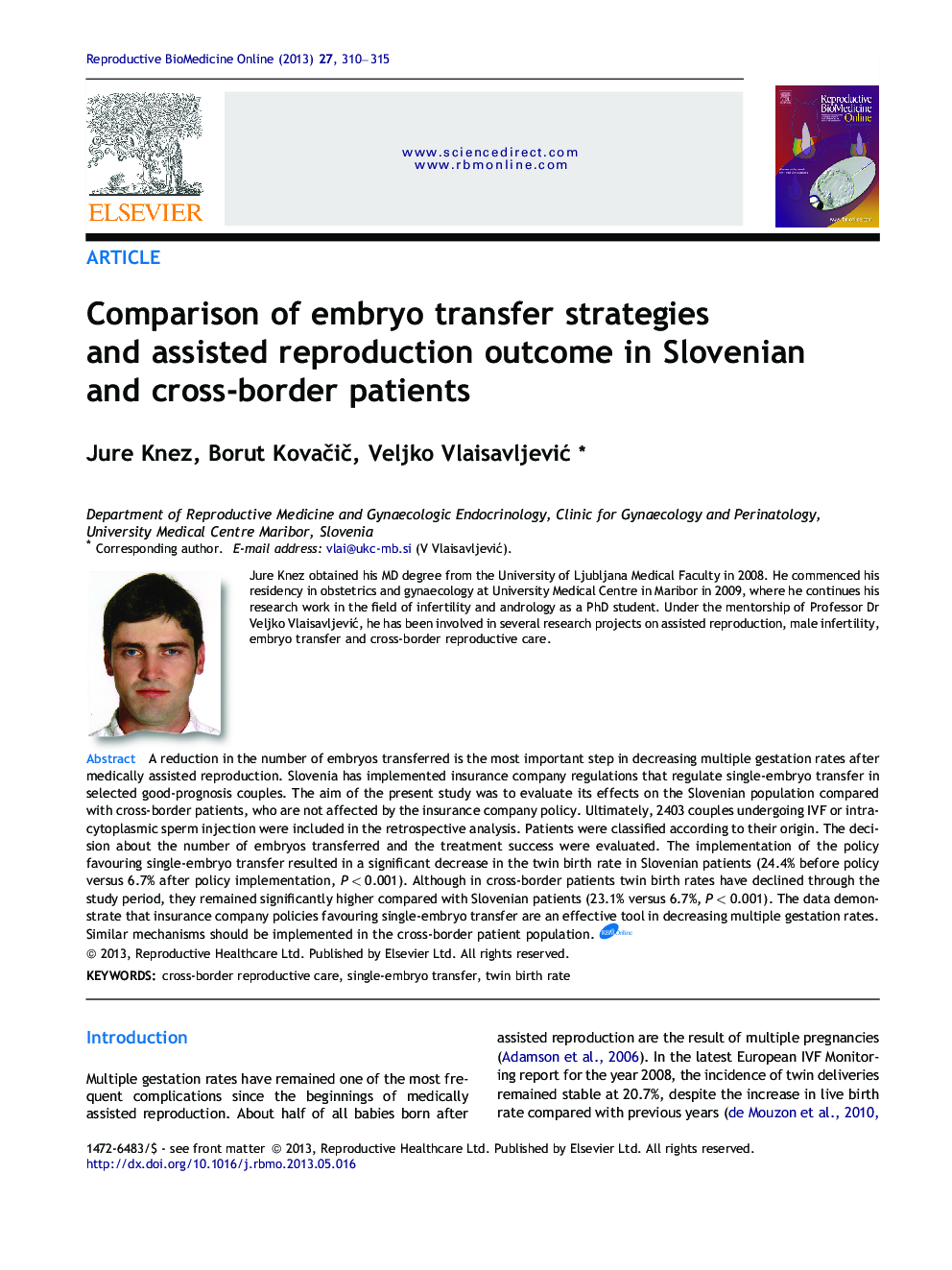| Article ID | Journal | Published Year | Pages | File Type |
|---|---|---|---|---|
| 3970574 | Reproductive BioMedicine Online | 2013 | 6 Pages |
A reduction in the number of embryos transferred is the most important step in decreasing multiple gestation rates after medically assisted reproduction. Slovenia has implemented insurance company regulations that regulate single-embryo transfer in selected good-prognosis couples. The aim of the present study was to evaluate its effects on the Slovenian population compared with cross-border patients, who are not affected by the insurance company policy. Ultimately, 2403 couples undergoing IVF or intracytoplasmic sperm injection were included in the retrospective analysis. Patients were classified according to their origin. The decision about the number of embryos transferred and the treatment success were evaluated. The implementation of the policy favouring single-embryo transfer resulted in a significant decrease in the twin birth rate in Slovenian patients (24.4% before policy versus 6.7% after policy implementation, P < 0.001). Although in cross-border patients twin birth rates have declined through the study period, they remained significantly higher compared with Slovenian patients (23.1% versus 6.7%, P < 0.001). The data demonstrate that insurance company policies favouring single-embryo transfer are an effective tool in decreasing multiple gestation rates. Similar mechanisms should be implemented in the cross-border patient population.A reduction in the number of embryos for transfer is the most important step in decreasing multiple gestation rates after medically assisted reproduction. Slovenia has implemented insurance company regulations that regulate single-embryo transfer in selected good-prognosis couples. This means that in patients with female partner younger than 36 years, undergoing their first or second treatment attempt, a single top-quality should be transferred in order for national insurance company to reimburse six IVF/intracytoplasmic sperm injection (ICSI) cycles. The aim of the present study was to evaluate the effect of this regulation on the Slovenian patient population compared with cross-border patients, who are not affected by insurance company policy. Ultimately, 2403 couples undergoing IVF or ICSI procedure were included in the analysis. Patients were classified according to their origin. The decision about the number of embryos for transfer and treatment success was evaluated. The implementation of the policy favouring single-embryo transfer resulted in a significant decrease in the twin birth rate in Slovenian patients (24.4% before versus 6.7% after policy implementation). Although in cross-border patients, twin birth rates have declined through the study period, they remained significantly higher compared with Slovenian patients (23.1% versus 6.7%). Our data demonstrate that insurance company policies favouring single-embryo transfer are an effective tool in decreasing multiple gestation rates. Similar mechanisms should be implemented in the cross-border patient population.
